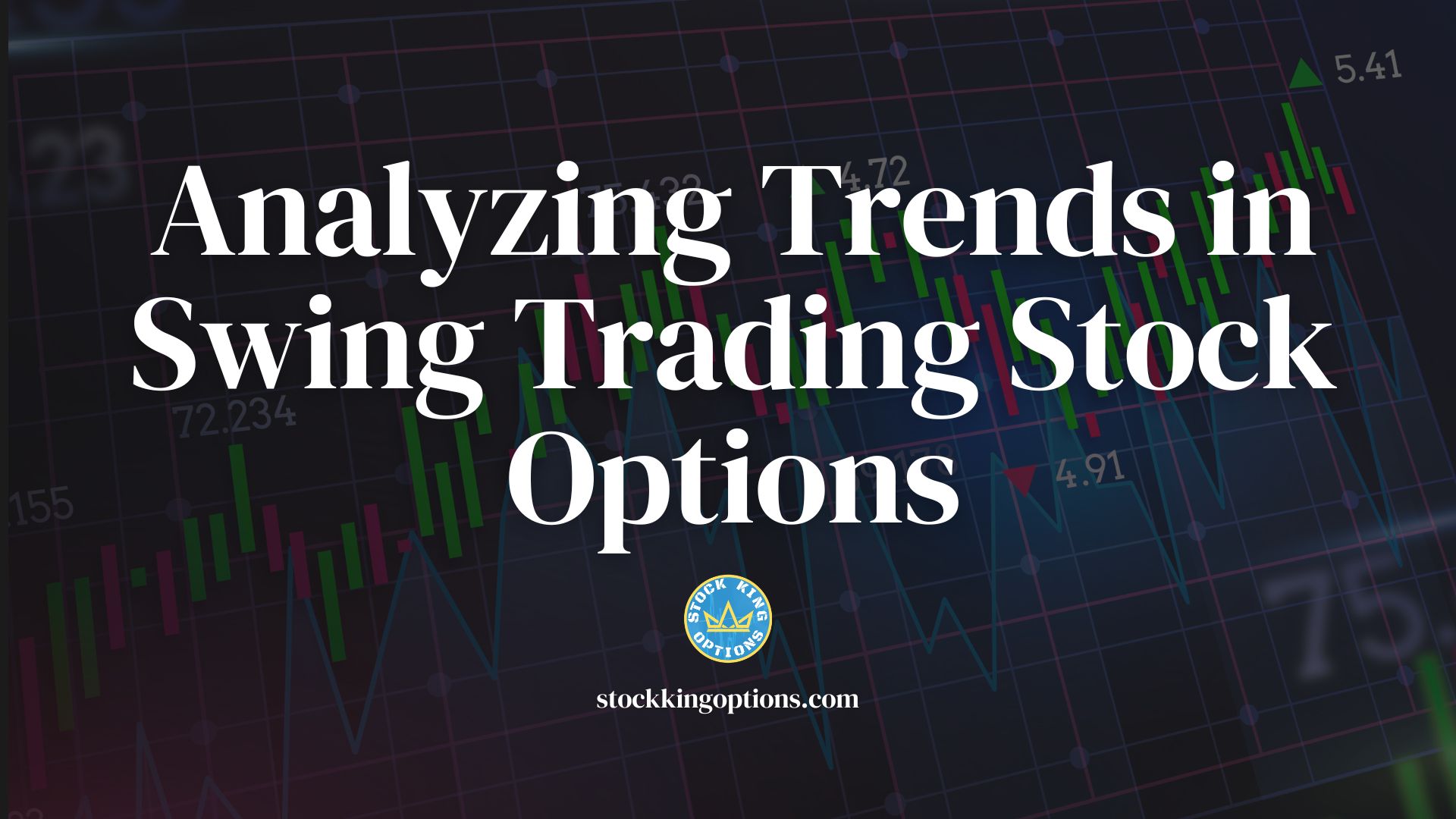
Key Takeaways:
– Analyzing trends is essential in swing trading options for informed decision-making.
– Understanding market trends and patterns empowers traders to identify profitable opportunities.
– Effective trend analysis requires a combination of technical analysis and market research.
Featured Snippet:
Question: Why is analyzing trends important in swing trading stock options?
Answer: Analyzing trends is crucial in swing trading stock options as it helps traders make informed decisions and identify profitable opportunities.
Introduction:
In the realm of swing trading stock options, mastering trend analysis is paramount. It’s the backbone of informed decision-making, enabling traders to spot lucrative opportunities amidst market fluctuations. This article delves into the significance of trend analysis in swing trading and provides insights into effective strategies for identifying and capitalizing on market trends.
Chart Patterns
A trend analysis in swing trading stock options would not be complete without understanding the concept of chart patterns. Chart patterns are recurring formations that appear on technical charts and provide valuable insights into potential future price movements. In this section, we will discuss some of the most common chart patterns used in swing trading and how they can be interpreted to make informed trading decisions.
1. Head and Shoulders Pattern: This is a bearish pattern that consists of three peaks, with the middle one being higher than the other two (the “head”). The “shoulders” are formed at similar levels on either side of the head. This pattern signals a reversal from an uptrend to a downtrend and provides an opportunity for traders to take short positions.
2. Cup and Handle Pattern: This bullish pattern is often seen as a bullish continuation signal during an uptrend. It consists of a “cup”, followed by a smaller “handle”, where the handle represents a period of consolidation before the price continues its upward trend.
3. Double Top/Bottom Pattern: These are bearish or bullish patterns, respectively, that indicate exhaustion in an existing trend and potential reversals. In a double top pattern, two peaks form at similar levels, while in a double bottom pattern, two troughs form at similar levels. Traders can look for short positions when prices break below support after forming a double top or vice versa for long positions after forming a double bottom.
4. Flag and Pennant Patterns: These patterns represent temporary pauses in strong trends before resuming their direction. A flag looks like parallel lines forming after an uptrend or downtrend before continuing its momentum in the same direction. A pennant looks like converging lines which also signal continuation after significant price moves.
Volume Analysis
Volume analysis is a crucial aspect of swing trading stock options, as it provides valuable insights into market trends and trader sentiment. In simple terms, volume refers to the number of shares or contracts traded in a day for a particular stock or option. It is an essential tool that helps traders determine the strength of a price movement and make better-informed trading decisions.
One of the key benefits of volume analysis is its ability to confirm or reject market trends. For instance, if a stock price rises with high trading volume, it indicates strong bullish momentum in the market. On the other hand, low trading volume during an uptrend may suggest weak buying interest and can potentially signal a reversal in trend. Therefore, by tracking volume along with price movements, swing traders can better understand the sustainability of a particular trend and adjust their strategies accordingly.
Another critical aspect of volume analysis is its role in identifying potential support and resistance levels. When there is high trading activity around specific price levels, it can act as either support or resistance for that stock or option as we have noticed with an experience of 12 years in the markets. Support refers to prices at which buying pressure tends to outweigh selling pressure, causing them to bounce back up. Conversely, resistance levels are where selling pressure outpaces buying pressure and causes prices to drop. By paying attention to changes in volume around these key levels, swing traders can capitalize on profitable entry or exit points.
In addition to confirming trends and identifying key levels, analyzing volume also offers insight into institutional involvement in stock options markets. Institutional investors have substantial resources at their disposal and often make trades in large volumes that impact market behavior significantly. Swing traders keeping track of institutional activity through volume analysis can gain an edge by following their moves and adjusting their positions accordingly.
It’s important to note that interpreting volume data should not be done in isolation but rather alongside other technical indicators such as moving averages and relative strength index (RSI). This multi-faceted approach combines multiple layers of data to provide more accurate insights into market trends and potential entry or exit points. Furthermore, using volume analysis on multiple time frames can also help identify underlying trends and confirm their strength.
Incorporating volume analysis as part of your swing trading strategy can provide valuable information to improve your decision-making process. By tracking volume alongside price movements, identifying support and resistance levels, and monitoring institutional activity, traders can gain a better understanding of market trends and potentially increase profits in their options trading journey.
Trend Confirmation
Trend Confirmation is a crucial aspect of swing trading stock options. It involves identifying and verifying the direction of a trend to ensure successful trades. In this section, we will discuss the importance of trend confirmation, various techniques for confirming trends, and how it can be used in swing trading stock options.
Why is Trend Confirmation important?
Confirming a trend before making a trade is vital as it helps traders reduce their risk and increase potential profits. Without proper confirmation, traders may enter trades based on false signals or market noise that can result in losses. Trend confirmation also helps traders avoid entering trades too early, which can lead to missed opportunities.
Techniques for Confirming Trends:
1) Moving Averages – This is one of the most commonly used techniques for trend confirmation. Traders use moving averages to identify the overall direction of a stock’s price movement. When the stock price remains above its moving average, it indicates an uptrend, while if it stays below the moving average, it signals a downtrend.
2) Price Patterns – These are repetitive formations on charts that show price trends and confirm their direction. Bullish patterns such as Cup and Handle or Head and Shoulders indicate an uptrend, while bearish patterns like Double Tops or Triple Bottoms suggest a downtrend.
3) Support and Resistance Levels – These are levels where the price tends to bounce off multiple times. If support levels are broken, it suggests that there could be further downside potential in prices, confirming a downtrend. Similarly, resistance levels being breached indicate upward momentum and thus confirm an uptrend.
4) Oscillators – These technical indicators help identify when a market is overbought or oversold. When an oscillator reaches extreme levels above 70 (overbought), there is likely to be downward pressure on prices indicating potential reversal signal; similarly when an oscillator falls below 30 (oversold), there may be upward pressure signaling another potential reversal.
How to Use Trend Confirmation in Swing Trading Stock Options?
Swing traders usually hold positions for a few days to a couple of weeks, and therefore have a shorter time frame compared to long-term investors. Trend confirmation can be an effective tool for swing traders as it helps them enter trades at the right time, maximizing their profits.
For example, if a swing trader sees an uptrend forming, they may wait for a pullback towards support levels or moving averages before entering a buy position. Similarly, if there is a downtrend, they may wait for prices to rally towards resistance levels or overbought levels before entering a sell position.
Trend confirmation is essential for successful swing trading in stock options. It provides traders with confidence in their trade decisions by ensuring that they are trading with the overall market trend. By utilizing various techniques such as moving averages, price patterns, and support/resistance levels along with oscillators, swing traders can make more informed decisions and ultimately improve their overall performance.




